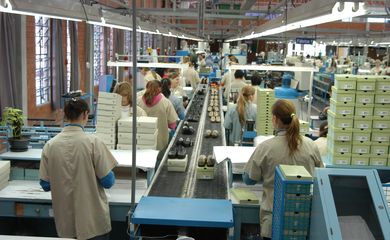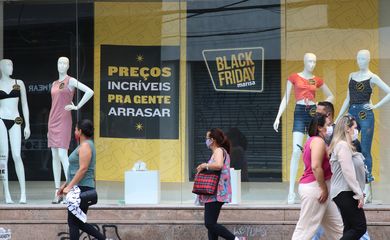Food and Gifts Pressure Christmas Inflation

This year's Christmas inflation showed a variation of 5.39% in the last 12 months, according to data released today (13), in Rio de Janeiro, by the Brazilian Institute of Economy (Ibre), of the Getulio Vargas Foundation (FGV )

It was below the inflation measured by the Consumer Price Index (IPC), from FGV, (9.88%) from December 2020 to November this year. Although the result is lower than that calculated in the same period last year, when it reached 13.51%, it surpassed that of previous years: 3.81% in 2019; 3.37% in 2018; and -2.30% in 2017.
According to Matheus Peçanha, an economist at Ibre and responsible for the research, the factor that pushed inflation the most was the increase in food, with an average variation of 7.93%, despite having been much lower than in the same period of the previous year (28 .61%). In the last 12 months, the whole chicken, for example, rose 24.28%, leading the list of items that most pressure the consumer's pocket. Then appear eggs (17.79%), olives (15.13%), beef (14.72%), wheat flour (13.70%) and olive oil (13.26%).
In the opposite direction, there was a drop in the prices of rice (-8.27%) and pork ham (-1.27%). Peçanha recalled that the problems in production costs, “which we have suffered since last year, with droughts, frosts, high fuel and electricity prices, are still felt, above all, in terms of proteins. The high exchange rate, favoring meat exports, also contributed to keep protein prices high”. He said, however, that the gradual return of rains has already normalized the dynamics of various food prices such as rice, fruits, vegetables and vegetables.
Gifts for the end of the year
Regarding gifts for the end of the year, the economist highlighted that those who did not anticipate shopping during Black Friday, in November, will pay a little more this Christmas than last year. The average price variation of the most wanted gifts was 3.39%, compared to 1.39% in 2020, 1.28% in 2019, 1.71% in 2018 and 1.02% in 2017.
Clothing (4.80%), accessories (2.57%), recreation and culture (2.13%) and household appliances and electronics (1.73%) were the segments that increased the most. Peçanha warned that the products that varied the most are also those of lesser value. Therefore, he recommended that consumers should be cautious when spending, since the job market has unemployment and repressed income and the scenario in the country is still one of high uncertainties.
The economist assessed that the moment is for a gradual return, "although the Ômicron variant is already on the radar, and it is natural to see the population movement to carry out a consumption that was frustrated at this same time last year, even with an employment scenario and uninviting income. It is important to be careful, plan consumption well and use credit responsibly”, he reinforced.
He recommended that, to save money, consumers should research a lot. “Today, technology makes this a lot easier with offer seekers. It's worth taking advantage of discounts and, suddenly, joining with family, friends or neighbors to shop in quantity and get a wholesale discount”, he concluded.
Text translated using artificial intelligence.




